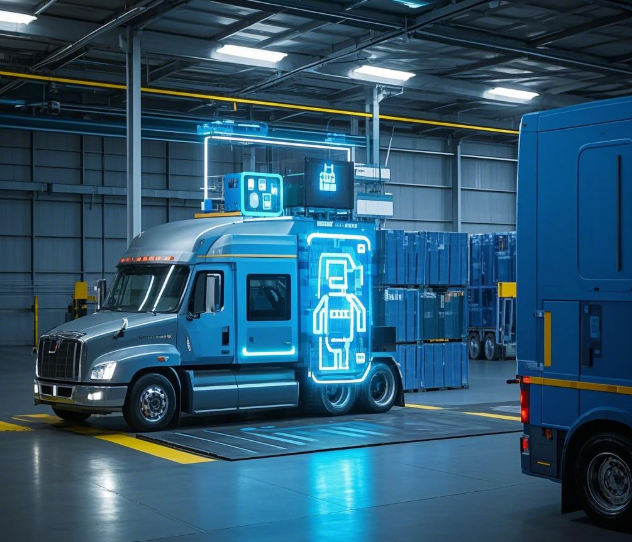In the field of physical transportation, embodied intelligence is expected to reduce circulation costs and become a key factor in the formation of an efficient, fast and intelligent logistics system.
In terms of warehouse management, embodied intelligent robots are equipped with advanced visual recognition systems and robotic arms, which can quickly and accurately identify goods of different sizes, shapes and weights, and classify and sort them according to preset rules. They can flexibly shuttle in complex warehousing environments, efficiently complete sorting tasks, greatly improve sorting efficiency and accuracy, and reduce labor costs and error rates. Embodied smart devices can sense the quantity, location, and status of inventory goods in real time through sensors, and realize automatic inventory counting and monitoring. When inventory levels fall below a set threshold, it can automatically send out replenishment reminders, helping companies optimize inventory allocation and reduce inventory overstock and waste. At the same time, the storage location of the goods can also be dynamically adjusted according to historical data and market demand forecasts to improve the utilization rate of storage space.
Transportation and distribution
Unmanned vehicle delivery: Embodied intelligent unmanned vehicles can plan the optimal delivery route based on real-time traffic conditions, weather information, and order data, and drive autonomously to complete the delivery task. In urban distribution, unmanned vehicles can shuttle through the streets and alleys to accurately deliver goods to customers, improve distribution efficiency and reduce traffic congestion. For remote areas or areas with inconvenient transportation, unmanned vehicle delivery can also solve the problem of last-mile delivery and reduce distribution costs.
Drone delivery: In some emergency or special situations, such as the distribution of medical emergency supplies and express delivery in remote mountainous areas, embodied intelligent drones can give full play to their advantages of fast speed and high flexibility to quickly deliver goods to their destinations. Drones can also use their aerial perspective to avoid ground traffic obstacles for more efficient delivery. In addition, through the clustered drone delivery system, multiple orders can be delivered at the same time, further improving the delivery capacity.
Intelligent driving assistance: For traditional freight trucks, embodied intelligent technology can provide intelligent driving assistance functions, such as active braking, adaptive cruise control, lane departure warning, etc. These functions can help drivers cope with unexpected situations, reduce traffic accidents caused by fatigue driving and human error, and improve the safety and reliability of transportation. At the same time, the intelligent driving assistance system can also optimize the driving route, reasonably arrange the rest time, and improve the overall transportation efficiency.

Figure: The application of embodied intelligence in the field of logistics and transportation
Logistics information management
Real-time monitoring and tracking: Embodied intelligent devices can be equipped with various sensors and communication modules to collect various information in the process of logistics and transportation in real time, such as the location and status of goods, the driving speed of transportation vehicles, fuel consumption, etc., and transmit the information to the logistics information management platform. Through the analysis and processing of these real-time data, logistics enterprises can realize real-time monitoring and tracking of the whole process of logistics and transportation, find problems in time and take corresponding measures, and improve the transparency and controllability of logistics and transportation.
Intelligent prediction and decision support: The embodied intelligent system can use big data analysis and machine learning algorithms to deeply mine and analyze various data in logistics and transportation to predict market demand, transportation flow, and cargo damage risk. Based on these prediction results, logistics enterprises can formulate reasonable transportation plans, optimize resource allocation, and adjust inventory strategies in advance, so as to provide strong support for enterprise decision-making and improve the efficiency and effectiveness of logistics operations.
With the development of technology, we can foresee that in the next few years, embodied intelligence will make greater progress in the field of autonomous driving, driving the entire industry towards a higher level of automation.
Related:
Analysis Development of Embodied Intelligence (1)
Analysis Development of Embodied Intelligence (2)
Analysis Development of Embodied Intelligence (3)
Analysis Development of Embodied Intelligence (4)
Analysis Development of Embodied Intelligence (5)
Analysis Development of Embodied Intelligence (6)






